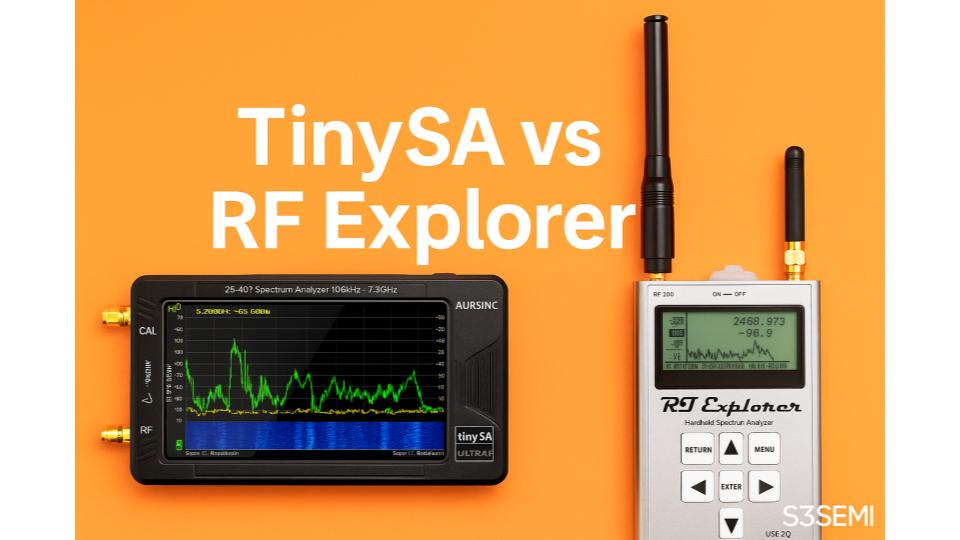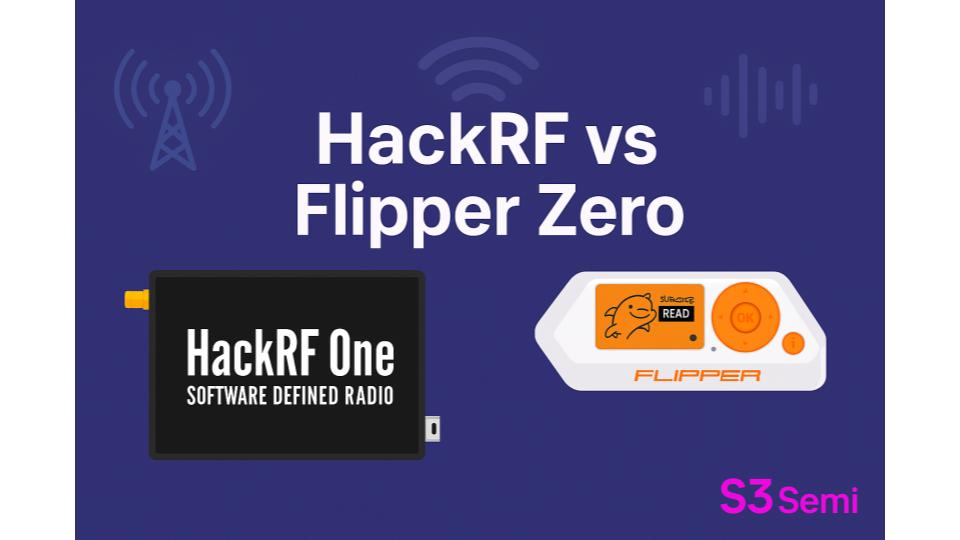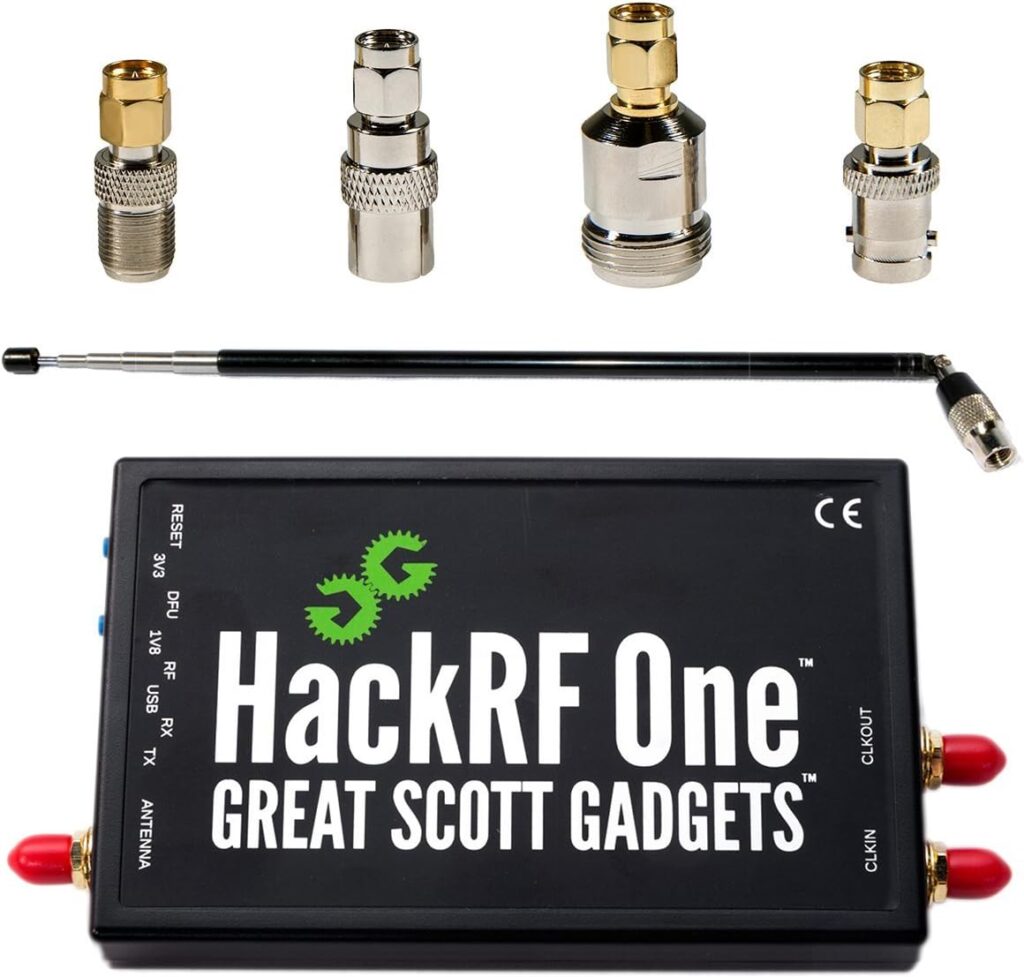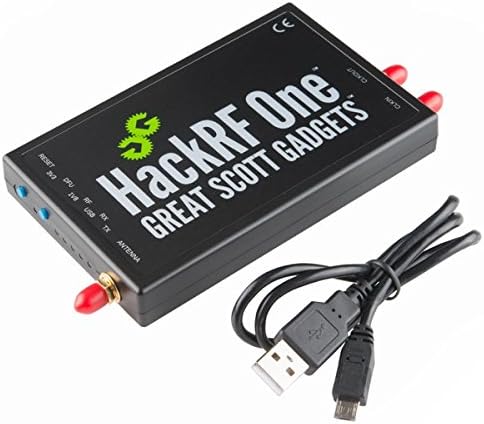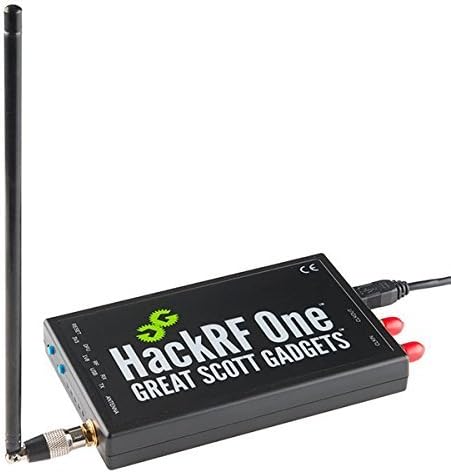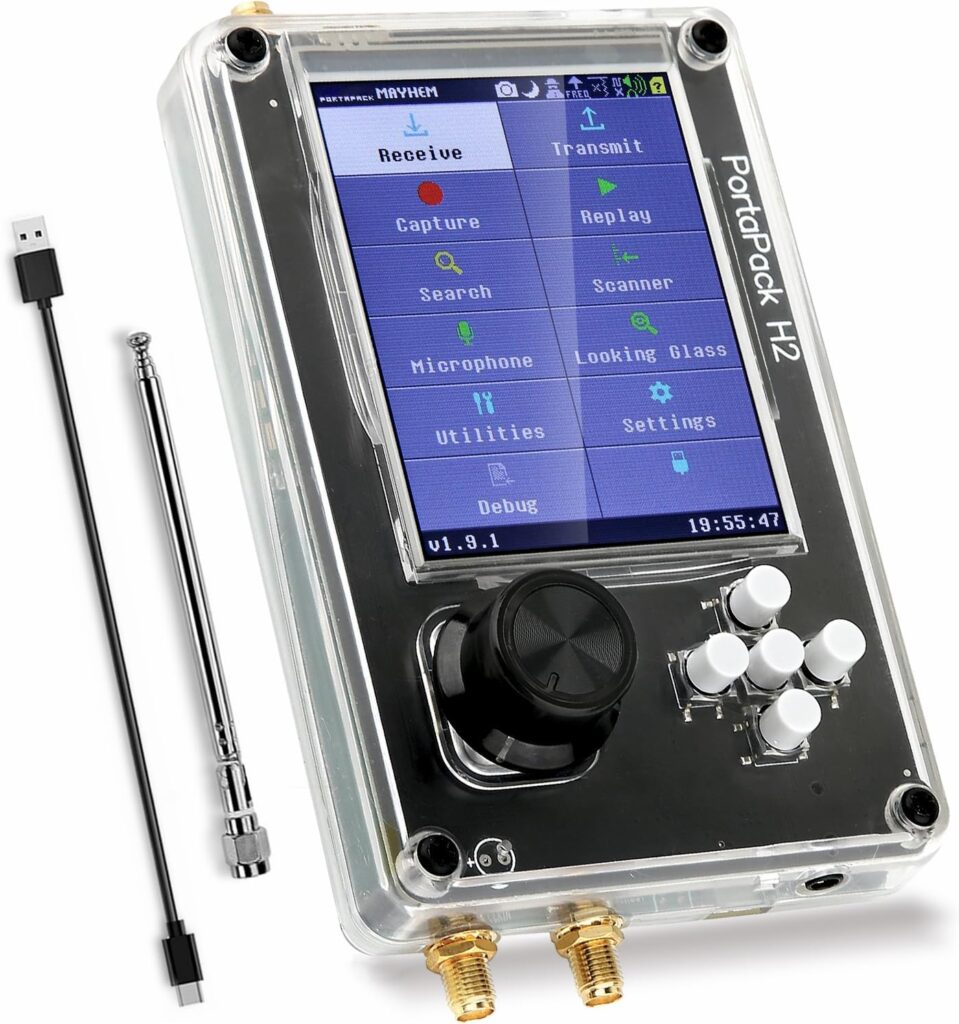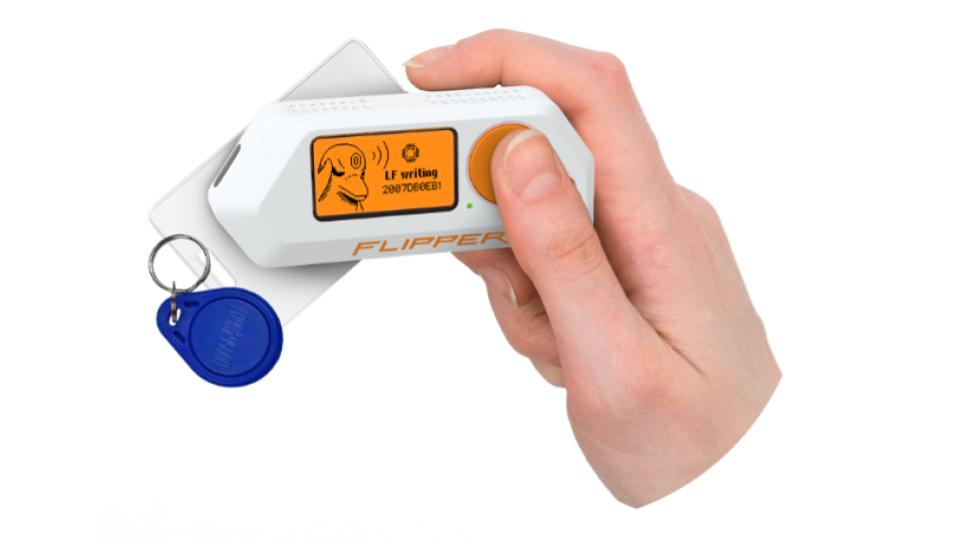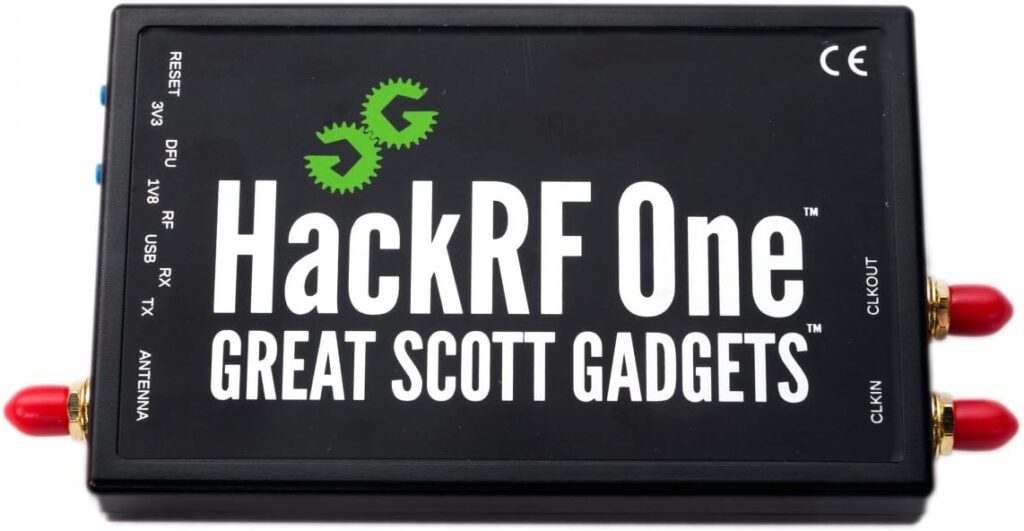In the world of wireless experimentation and signal analysis, two names have captured massive attention among enthusiasts, researchers, and security professionals – HackRF One and Flipper Zero. While both can interact with radio signals and digital devices, they serve very different purposes.
🏷️ HackRF on Amazon ⭐⭐⭐⭐
The HackRF One is a powerful Software-Defined Radio (SDR) built for wideband signal transmission and reception, while the Flipper Zero is a portable multi-tool for pentesters designed for convenience, portability, and device interaction.
Let’s compare them in detail to help you decide which one is right for your projects.
🔍 Overview
The HackRF One is an open-source, wideband SDR capable of both transmitting and receiving signals from 1 MHz to 6 GHz. Developed by Great Scott Gadgets, it’s used for everything from radio astronomy and GSM analysis to Wi-Fi, Bluetooth, and satellite signal experiments. It’s a lab-grade tool for those who understand radio frequencies and digital modulation.
The Flipper Zero, on the other hand, is a handheld hacking device focused on interacting with short-range systems like RFID, NFC, Bluetooth Low Energy, infrared, and sub-1GHz signals. It’s designed for penetration testing, security research, and learning about the devices we use every day. It’s much easier to use than the HackRF, but also far more limited in scope.
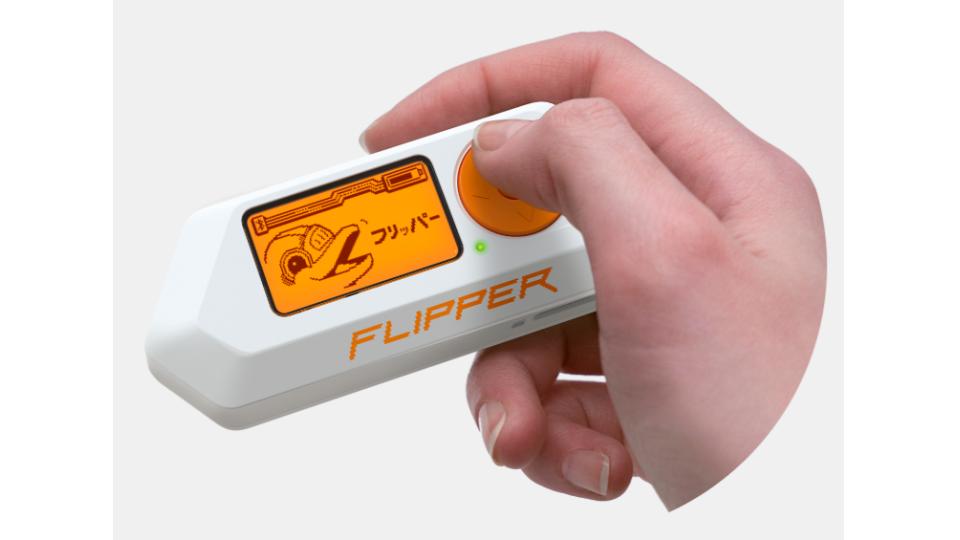
⚙️ Feature Comparison
| Feature | HackRF One | Flipper Zero |
|---|---|---|
| Type | Software-Defined Radio (SDR) | Portable Multi-Tool for RF, NFC, and Infrared |
| Frequency Range | 1 MHz – 6 GHz | 300 – 928 MHz (sub-GHz), 13.56 MHz (NFC), 125 kHz (RFID), IR, BLE |
| Transmit Capability | Yes | Limited (sub-1GHz only via Flipper TX apps) |
| Receive Capability | Yes | Yes, for specific RF bands |
| Modulation / Protocols | All via SDR software (AM, FM, GSM, LTE, Wi-Fi, ADS-B, etc.) | Fixed supported protocols (RFID, NFC, BLE, IR, garage remotes, etc.) |
| Software Support | GNU Radio, SDR#, GQRX, QSpectrumAnalyzer, HackRF Tools | Built-in firmware + Flipper Mobile App + Custom firmware support |
| Operating Mode | PC-controlled SDR via USB | Standalone handheld device |
| Frequency Resolution | Up to 20 million samples per second (20 Msps) | Limited to supported sub-GHz channels |
| Transmit Power | Around 15 dBm (varies by frequency) | Very low (enough for close-range devices) |
| Open Source | Fully open hardware and software | Partially open (firmware and community mods) |
| Portability | Requires computer | Pocket-sized standalone |
| Battery | None (USB-powered) | Built-in 2000 mAh battery |
| Target User | SDR enthusiasts, researchers, engineers | Security testers, tinkerers, hobbyists |
| 💳 Pricing | 💲Check Price | 💲Check Price |
📡 Signal Capabilities
The HackRF One is a true SDR – it can digitize radio signals across a massive bandwidth and let users analyze or synthesize them in software. This makes it possible to explore nearly any wireless system, from aircraft transponders (ADS-B) and GPS signals to digital TV, FM radio, or cellular networks. With the right software, it can even transmit or replay signals for research purposes.
The Flipper Zero operates primarily in the sub-1 GHz range, targeting consumer devices like key fobs, garage doors, and remote outlets. It can also emulate and clone RFID tags, interact with NFC cards, and communicate with Bluetooth devices. However, it’s not an SDR – it can’t scan or visualize full-band RF signals like the HackRF does.
💻 Software and Usability
The HackRF One relies heavily on external software and a host computer. Programs like GNU Radio, SDR#, or CubicSDR allow full control over signal analysis and decoding. However, it has a steep learning curve. You’ll need knowledge of frequency modulation, sample rates, and digital signal processing to use it effectively.
The Flipper Zero, by contrast, is extremely user-friendly. Its small LCD screen and onboard interface make it easy to scan, store, and replay signals directly. You can capture an RFID card, emulate it, or control your TV’s IR functions without connecting to a computer. The community-created apps and firmware extensions make it even more versatile, extending its reach into Wi-Fi, signal replay, and Bluetooth testing.
🧰 Build Quality and Design
The HackRF One is designed as a lab instrument. It’s a circuit board housed in an optional metal or plastic case with SMA connectors for antennas. It’s best used on a desk with a laptop or desktop computer. Its build quality is excellent, but it’s not intended to be carried around.
The Flipper Zero, meanwhile, is purpose-built for portability. Its durable casing, built-in screen, and rechargeable battery make it a perfect pocket companion. It’s designed to be used in the field – whether testing RFID doors, exploring RF remote controls, or analyzing NFC tags.
🔒 Legal and Ethical Use
Both devices can be used responsibly for research, education, and legitimate testing — but they can also interfere with radio systems if misused. The HackRF One, because of its transmit power and flexibility, can easily disrupt licensed frequencies if used carelessly. Always ensure compliance with local regulations and spectrum laws.
The Flipper Zero is more restricted by design, limiting transmission power to short range and preventing most illegal activity out of the box. Still, responsible use and respect for privacy and security standards are essential.
💡 Ideal Use Cases
| User Type | Recommended Device | Reason |
|---|---|---|
| RF Engineers / Researchers | HackRF One | Full-bandwidth SDR for signal capture, analysis, and transmission |
| Penetration Testers | Flipper Zero | Portable, simple, and fast for on-site device interaction |
| Security Students / Hobbyists | Flipper Zero | Easier learning curve, fun and accessible |
| Advanced Wireless Experimenters | HackRF One | Deep analysis of cellular, satellite, and digital communication systems |
| IoT / Device Testers | Flipper Zero | Multi-protocol support for RFID, NFC, BLE, and IR |
🏁 Verdict
The HackRF One and Flipper Zero are both incredible tools, but they serve entirely different audiences.
Choose the HackRF One if you want total control over the radio spectrum – it’s a professional-grade SDR that can receive, transmit, and analyze signals across nearly the entire RF range. It’s perfect for engineers, researchers, and advanced hobbyists who need precision and flexibility.
Choose the Flipper Zero if you want a fun, portable, and practical hacking tool for interacting with the digital world around you. It’s easy to use, compact, and a great educational gateway into RF, NFC, and IoT security.
In short, the HackRF One is a laboratory powerhouse, while the Flipper Zero is a pocket-sized pentester’s sidekick.
